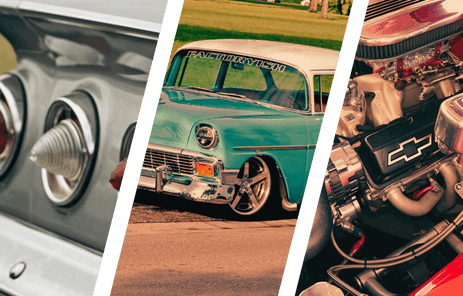
Sadly, this is not the first time we’ve heard of an engine building horror story, but to be perfectly honest, many times the engine builders are simply doing what the customer has told them to do. Let’s be honest here… if you don’t work with your engine builder, and hopefully your builder is one that you are familiar with and has a great reputation, then you are probably not going to listen to his advice as quickly.
There are times however, when an engine build goes horribly wrong. While we don’t care to make accusations, we’ll present this story as told by the unhappy customer and let you come to your own conclusions.

According to Joshua Hamilton, a performance enthusiast from Ohio, his father purchased a small block Chevy engine from a local shop. The engine was supposed to be a new performance engine, for which the elder Hamilton has receipts totaling $28,000.
Joshua Hamilton sent us 12 photos of the engine, which did not run, after they had taken the oil pan off to investigate the problem. Both men were floored when they saw the state of the components used in the engine build.
 The pair continued to tear down the engine to find the engine’s problem. When they removed the cylinder heads, the story got even more disappointing. “I’m saying the motor wouldn’t have ran even if we tried too,” said the younger Hamilton. “It had a bolt in the cylinder, what do you think would have happened?”
The pair continued to tear down the engine to find the engine’s problem. When they removed the cylinder heads, the story got even more disappointing. “I’m saying the motor wouldn’t have ran even if we tried too,” said the younger Hamilton. “It had a bolt in the cylinder, what do you think would have happened?”
Based solely on the photos and Hamilton’s statements, most of Hamilton’s facebook friends agree with Hamilton’s assessment of the engine build. “Bobby gave us a used beat up old motor, when we were supposed to have gotten a new one.”
 The photos that we received show an OEM engine block. While OEM engine blocks can be used to make higher horsepower, finding a decent core to work with takes time and effort. These Gen I engines have not been used in a production GM car for over 15 years. Most likely any decent cores that can be found are 30-40 year old core blocks that need serious work to make them race-worthy.
The photos that we received show an OEM engine block. While OEM engine blocks can be used to make higher horsepower, finding a decent core to work with takes time and effort. These Gen I engines have not been used in a production GM car for over 15 years. Most likely any decent cores that can be found are 30-40 year old core blocks that need serious work to make them race-worthy.
Forget about the term “seasoned” block. Remember that cast iron is metal and all metal has a point where it fatigues. Heat cycles, loading and a host of other issues can accelerate the fatigue point of an engine block. Simply machining the bores and throwing a spray can paint job on the outside of the block is not a substitute for a fully sonic tested or magnafluxed block.
Even after the junkyard block has been thoroughly cleaned and checked for cracks, other work needs to be done before it is ready to serve as the foundation for your engine build. Casting flash that is almost non-existent in the modern cast blocks, will need to be removed from places like oil return ports in the lifter galley.

Other processes like line boring, honing, and resurfacing the block are mandatory to prep the block for high performance. Many of the high performance engine builders will forego all the time to recondition a used block and start with a decent modern casting from an aftermarket company.

Hamilton also pointed out the crankshaft balancing job in the engine. Many of his facebook friends commented on the crude welding and grinding. In one instance, the weight was pressed into the crankshaft’s counterweight without a single weld to hold it in place. Another Facebook friend pointed out the mis-matched crankshaft main bearing bolts.
Hopefully the Hamilton family and their engine builder will be able to work things out, but… let this be a lesson for other consumers. Find an engine builder in your area that has a great reputation and work with them to get exactly what you are looking for. Only then will everyone be happy in the end.

You might also like
Dakota Digital RTX: Modern Technology Built For The OBS Era
Dakota Digital RTX brings modern tech, custom lighting, and advanced data to any OBS truck while preserving a factory-correct look.


